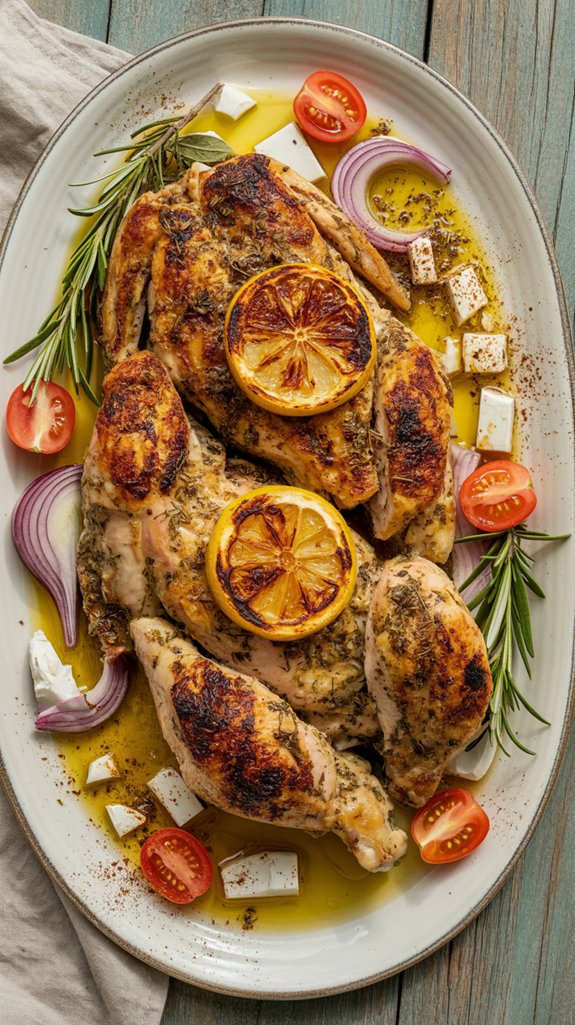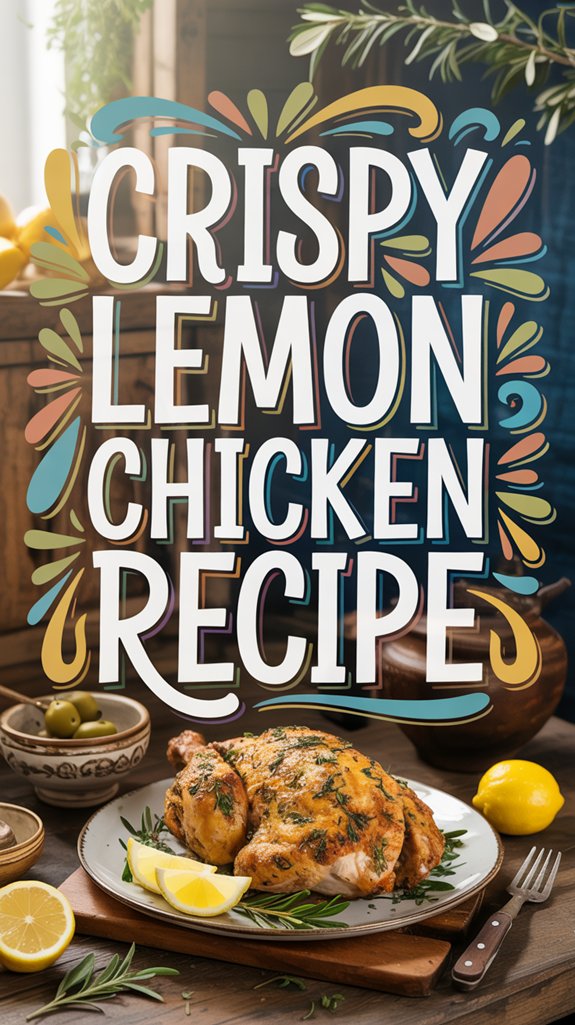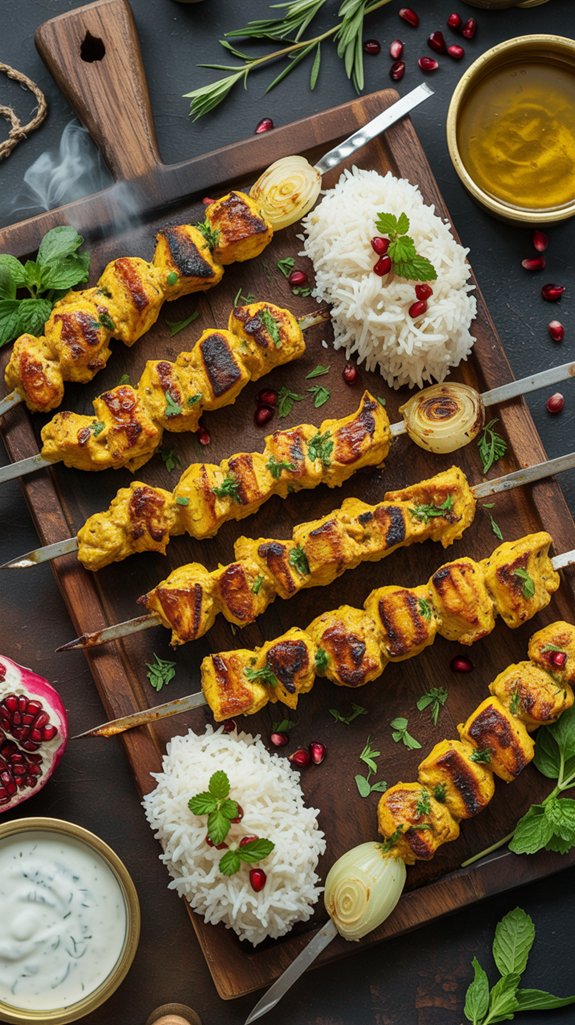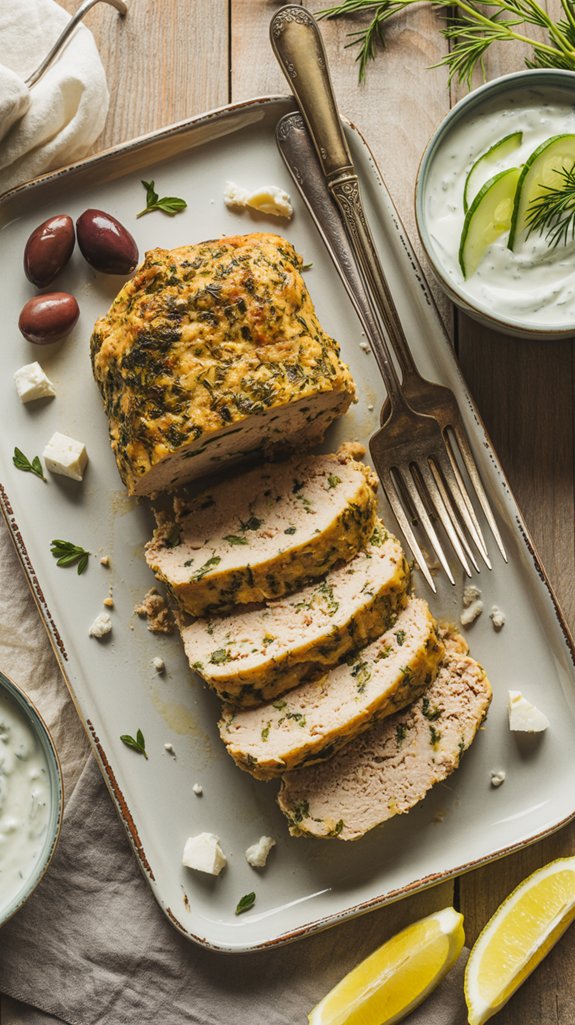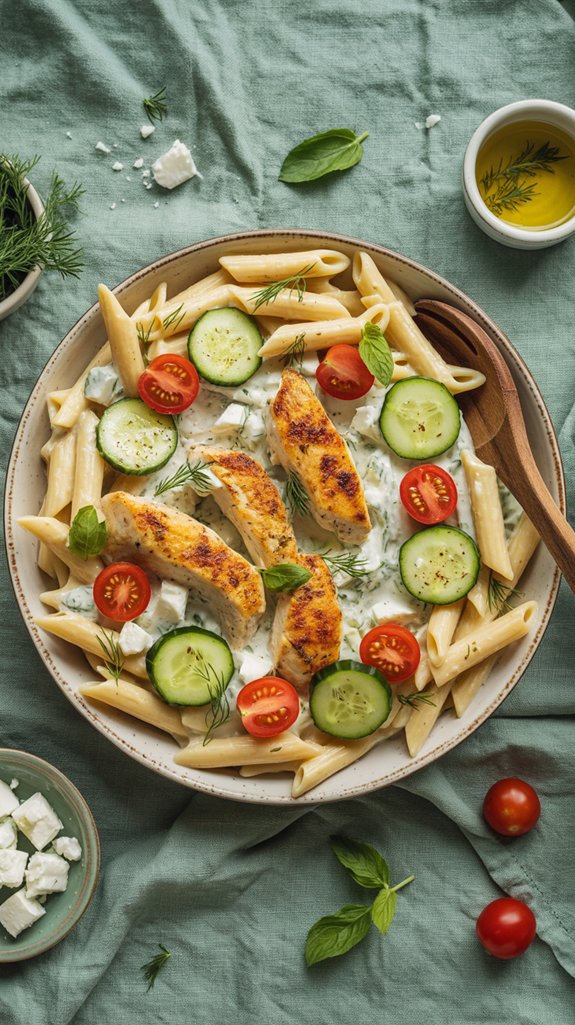Why You’ll Love This this Crispy Mediterranean Lemon Chicken
This chicken hits all the right notes with its golden, crunchy coating that practically melts in your mouth, while that bright lemon flavor cuts through any dinner table boredom.
You get tender, juicy chicken breasts that won’t dry out on you – because nobody has time for chicken that tastes like cardboard, am I right.
Plus, with just a handful of ingredients and one baking dish, you can have this Mediterranean-inspired beauty on the table in under an hour, which means less cleanup and more time to actually enjoy your meal.
Ingredients List
You’ll need just a handful of simple ingredients to create this golden, crispy masterpiece that’ll make your kitchen smell absolutely divine.
- 3 tablespoons butter, melted
- 2 tablespoons lemon juice
- 1 garlic clove, minced
- 1/2 teaspoon salt
- 1/4 teaspoon pepper
- 1/2 cup seasoned bread crumbs
- 4 boneless skinless chicken breast halves (4 ounces each)
- Healthier swaps that actually work: You can easily substitute olive oil for butter if you’re watching saturated fat, and whole wheat breadcrumbs add extra fiber without sacrificing that satisfying crunch we’re all after.
- Fresh is best: While bottled lemon juice works in a pinch, fresh lemon juice brings that bright, zesty punch that makes this dish sing – plus you’ll feel like a proper chef mincing that garlic yourself.
- Portion perfect: Those 4-ounce chicken breasts cook evenly and won’t leave you with dry, overcooked edges while waiting for thick centers to finish, because nobody wants to play chicken roulette at dinner time.
- Prep your flavor base: In a shallow bowl, combine 3 tablespoons melted butter, 2 tablespoons lemon juice, 1 minced garlic clove, 1/2 teaspoon salt, and 1/4 teaspoon pepper.
- Set up your breading station: Place 1/2 cup seasoned bread crumbs in a separate shallow bowl next to your butter mixture.
- Coat the chicken: Dip each of the 4 boneless skinless chicken breast halves (4 ounces each) in the butter mixture, making sure both sides are well-coated, then roll in the bread crumbs until completely covered.
- Arrange for baking: Place the coated chicken breasts in a greased 13-inch x 9-inch x 2-inch baking dish, spacing them evenly so they cook uniformly.
- Add final flavor boost: Drizzle any remaining butter mixture over the top of the breaded chicken for extra moisture and taste.
- Bake to perfection: Cook revealed at 350°F for 25-30 minutes, or until the juices run clear when you pierce the thickest part with a fork – no pink should remain.
- Rice or grains: Plain white rice, wild rice pilaf, or even quinoa turn into something special when they catch those pan drippings. Honestly, I’d probably eat cardboard if it had been sitting under this chicken long enough.
- Roasted vegetables: Asparagus, Brussels sprouts, or carrots roasted alongside the chicken create a complete one-pan situation that makes cleanup almost bearable. Toss them with olive oil and salt, then let the oven do the work while you pretend to be an organized cook.
- Pasta possibilities: Buttered noodles, garlic mashed potatoes, or even a simple pasta salad complement the Mediterranean flavors without competing for attention. Sometimes simple sides are exactly what a star dish needs.
- Fresh and light options: A crisp Caesar salad, steamed broccoli, or sautéed green beans provide a nice contrast to all that crispy, buttery richness. Your digestive system might actually thank you for including something green on the plate.
- Bread for the smart people: Crusty dinner rolls, garlic bread, or even plain old dinner rolls become vehicles for capturing every last drop of that lemony butter sauce. Waste not, want not, especially when it comes to garlic butter.
- Pound it out: Give those chicken breasts a gentle beating with a meat mallet or rolling pin to even out the thickness. Nobody wants to bite into chicken that’s simultaneously overcooked and undercooked, which is exactly what happens when one end is twice as thick as the other.
- Temperature matters more than time: Invest in a meat thermometer if you haven’t already, because 165°F is your magic number. The recipe says 25-30 minutes, but your oven might’ve different opinions about what 350 degrees actually means.
- Let the butter mixture cool slightly: If you dip chicken into molten butter straight from the microwave, you’re basically just washing off any seasoning that was trying to stick. Give it a minute or two to come down from lava temperature.
- Press those crumbs: After coating each piece, gently press the breadcrumbs into the chicken with your hands. It feels a bit weird, but it’s the difference between crumbs that stay put and crumbs that end up scattered around your baking dish like sad little islands.
- Line your pan with parchment: This isn’t about being fancy, it’s about not spending twenty minutes scrubbing baked-on butter and breadcrumbs later. Future you will appreciate the forethought, trust me on this one.
- Calories: 285-310 per serving
- Protein: 28-30 grams
- Total Fat: 12-15 grams
- Saturated Fat: 6-8 grams
- Carbohydrates: 10-12 grams
- Fiber: 1 gram
- Sugar: 1 gram
- Sodium: 520-580 mg
- Cholesterol: 85-95 mg
- Vitamin C: 8% daily value (from lemon juice)
- Calcium: 4% daily value
- Iron: 6% daily value
Step by Step Directions
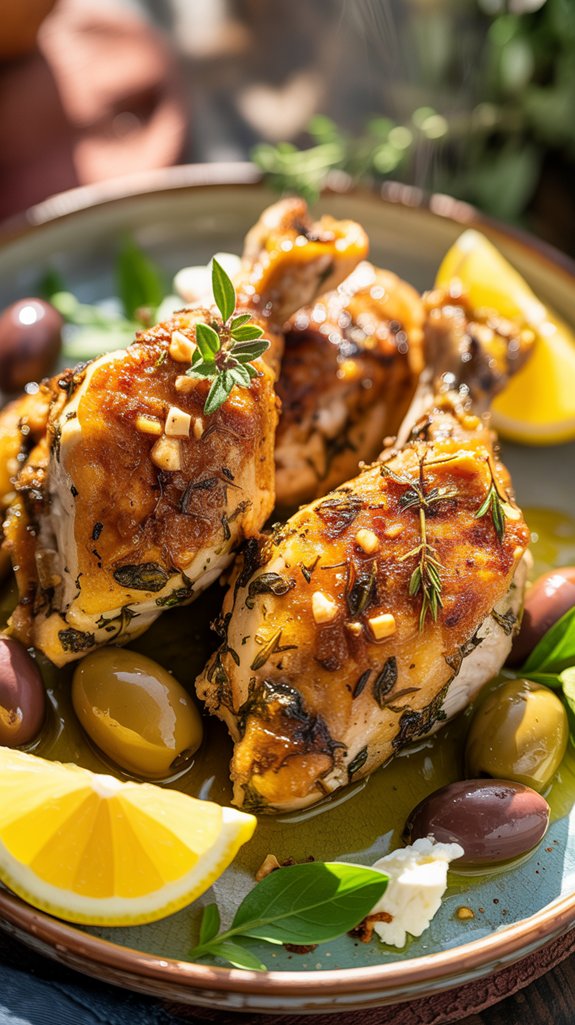
Getting this crispy Mediterranean lemon chicken on your table is straightforward with just a few simple steps that’ll have your family asking for seconds.
For an even more flavorful variation, you can prepare this dish in a cast iron Dutch oven which provides superior heat retention and creates an exceptionally crispy exterior.
Substitutions and Variations
• Switch up the coating: Can’t find seasoned breadcrumbs? Regular breadcrumbs work just fine – just add a pinch of Italian seasoning, garlic powder, or whatever herbs are hanging out in your spice cabinet.
Panko breadcrumbs actually create an even crispier crust, though they might make you feel a little fancy.
• Make it gluten-free**: Crushed cornflakes** or gluten-free breadcrumbs do the trick perfectly.
You could even try crushed rice crackers if you’re feeling adventurous, though I can’t promise your family won’t give you strange looks.
• Herb it up: Fresh or dried herbs transform this dish completely – try rosemary, thyme, oregano, or basil mixed right into those breadcrumbs.
A tablespoon of grated Parmesan cheese doesn’t hurt either, unless you’re one of those people who thinks there’s such a thing as too much cheese.
• Spice things up: Add a dash of paprika, cayenne pepper, or red pepper flakes to the butter mixture for some heat.
Your taste buds will thank you, even if your mouth needs a glass of milk afterward.
• Dairy alternatives: Olive oil works instead of butter, though you’ll lose some of that rich flavor.
Melted margarine does the job too, but to be frank – butter just makes everything better.
• Different proteins: This same method works beautifully with pork chops, fish fillets, or even thick slices of eggplant for the vegetarians in your life who still want something crispy and satisfying.
Additional Things to Serve With This Dish
This lemon chicken practically begs for sides that can soak up all that buttery, garlicky goodness dripping from the pan.
Cooking Tips & Tricks (Chef’s Notes)
A few strategic moves can turn this simple recipe into something that’ll make your kitchen smell like a Mediterranean dream and your chicken actually stay moist.
Nutritional Facts
Based on the recipe serving 4 people (1 chicken breast per serving):
The majority of calories come from lean protein, making this a relatively balanced meal that fits well into most dietary plans.
The sodium content is moderate, primarily from the seasoned breadcrumbs and added salt.
Fun “Did You Know?”
Beyond its impressive nutritional profile, this Mediterranean lemon chicken recipe connects you to centuries of culinary tradition. Did you know that ancient Greeks believed lemons possessed magical cleansing properties? They’d often serve lemon-dressed meats during religious ceremonies.
The breadcrumb coating technique actually originated in medieval European monasteries, where monks uncovered that coating proteins helped retain moisture during long cooking times.
Here’s something fascinating: garlic wasn’t just used for flavor—Mediterranean cultures considered it a natural antibiotic. When you’re making this dish, you’re literally recreating cooking methods that’ve nourished families across the Mediterranean for over 800 years.

